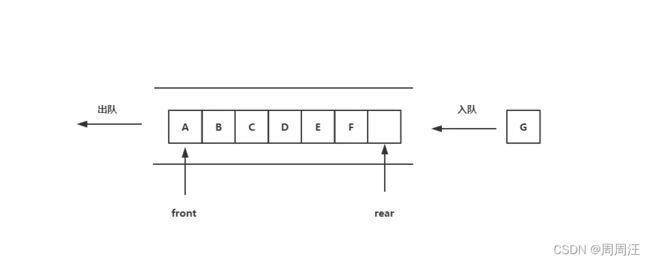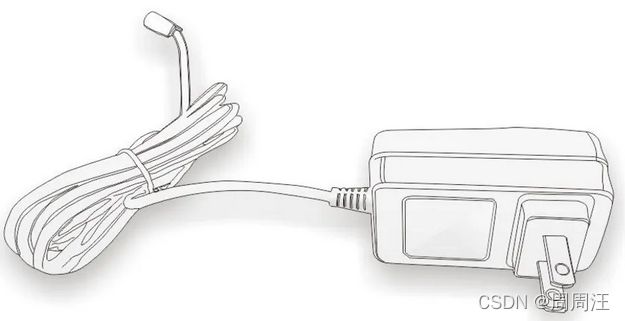【C++】STL中stack、queue、priority_queue的详解(模拟实现源码)
目录
- stack的介绍和使用
- queue的介绍和使用
- priority_queue的介绍和使用
-
- priority_queue的模拟实现
- 容器适配器
- STL标准库中stack和queue的底层结构
- deque的简单介绍
- vector和list的优缺点
- 相比vector和list: deque的缺陷和优势
-
- deque致命缺陷:
- STL标准库中对于stack和queue的模拟实现
-
- stack的模拟实现
- queue的模拟实现
秃头侠们好呀,今天来说 stack、queue、priority_queue和deque
stack的介绍和使用
stack的文档详解
- stack是一种容器适配器,专门用在具有后进先出操作的上下文环境中,其删除只能从容器的一端进行元素的插入与提取操作。
- stack是作为容器适配器被实现的,容器适配器即是对特定类封装作为其底层的容器,并提供一组特定的成员函数来访问其元素,元素在特定容器的尾部(即栈顶)被压入和弹出。
- stack的底层容器可以是任何标准的容器类模板或者一些其他特定的容器类,这些容器类应该支持以下操作:
1、empty:判空操作
2、back:获取尾部元素操作
3、push_back:尾部插入元素操作
4、pop_back:尾部删除元素操作 - 标准容器vector、deque、list均符合这些需求,默认情况下,如果没有为stack指定特定的底层容器,默认情况下使用deque。

stack的使用
stack() 构造空的栈
empty() 检测stack是否为空
size() 返回stack中元素的个数
top() 返回栈顶元素的引用
push() 将元素val压入stack中
pop() 将stack中尾部的元素弹出
queue的介绍和使用
queue的文档详解
- 队列是一种容器适配器,专门用于在(先进先出)中操作,其中从容器一端插入元素,另一端提取元素。
- 队列作为容器适配器实现,容器适配器即将特定容器类封装作为其底层容器类,queue提供一组特定的成员函数来访问其元素。元素从队尾入队列,从队头出队列。
- 底层容器可以是标准容器类模板之一,也可以是其他专门设计的容器类。该底层容器应至少支持以下操作:
1、empty:检测队列是否为空
2、size:返回队列中有效元素的个数
3、front:返回队头元素的引用
4、back:返回队尾元素的引用
5、push_back:在队列尾部入队列
6、pop_front:在队列头部出队列 - 标准容器类deque和list满足了这些要求。默认情况下,如果没有为queue实例化指定容器类,则使用标准容器deque。
queue的使用
queue() 构造空的队列
empty() 检测队列是否为空,是返回true,否则返回false
size() 返回队列中有效元素的个数
front() 返回队头元素的引用
back() 返回队尾元素的引用
push() 在队尾将元素val入队列
pop() 将队头元素出队列
priority_queue的介绍和使用
priority_queue的文档详解
- 优先队列是一种容器适配器,根据严格的弱排序标准,它的第一个元素总是它所包含的元素中最大的。
- 此上下文类似于堆,在堆中可以随时插入元素,并且只能检索最大堆元素(优先队列中位于顶部的元素)。
- 优先队列被实现为容器适配器,容器适配器即将特定容器类封装作为其底层容器类,queue提供一组特定的成员函数来访问其元素。元素从特定容器的“尾部”弹出,其称为优先队列的顶部。
- 底层容器可以是任何标准容器类模板,也可以是其他特定设计的容器类。容器应该可以通过随机访问迭代器访问,并支持以下操作:
1、empty():检测容器是否为空
2、size():返回容器中有效元素个数
3、front():返回容器中第一个元素的引用
4、push_back():在容器尾部插入元素
5、pop_back():删除容器尾部元素 - 标准容器类vector和deque满足这些需求。默认情况下,如果没有为特定的priority_queue类实例化指定容器类,则使用vector。
- 需要支持随机访问迭代器,以便始终在内部保持堆结构。容器适配器通过在需要时自动调用算法函数make_heap、push_heap和pop_heap来自动完成此操作。
注意
优先级队列默认使用vector作为其底层存储数据的容器,在vector上又使用了堆算法将vector中元素构造成堆的结构,因此priority_queue就是堆,所有需要用到堆的位置,都可以考虑使用priority_queue。注意:默认情况下priority_queue是大堆。
1、priority_queue()/priority_queue(first,last) 构造一个空的优先级队列
2、empty( )检测优先级队列是否为空,是返回true,否则返回false
3、top( ) 返回优先级队列中最大(最小元素),即堆顶元素
4、push(x) 在优先级队列中插入元素x
5、pop() 删除优先级队列中最大(最小)元素,即堆顶元素
- 默认情况下,priority_queue是大堆
#include - 如果在priority_queue中放自定义类型的数据,用户需要在自定义类型中提供> 或者< 的重载。
class Date
{
public:
Date(int year = 1, int month = 1, int day = 1)
: _year(year)
, _month(month)
, _day(day)
{}
bool operator<(const Date& d)const
{
return (_year < d._year) ||
(_year == d._year && _month < d._month) ||
(_year == d._year && _month == d._month && _day < d._day);
}
bool operator>(const Date& d)const
{
return (_year > d._year) ||
(_year == d._year && _month > d._month) ||
(_year == d._year && _month == d._month && _day > d._day);
}
friend ostream& operator<<(ostream& _cout, const Date& d)
{
_cout << d._year << "-" << d._month << "-" << d._day;
return _cout;
}
private:
int _year;
int _month;
int _day;
};
void TestPriorityQueue()
{
// 大堆,需要用户在自定义类型中提供<的重载
priority_queue<Date> q1;
q1.push(Date(2022, 8, 6));
q1.push(Date(2022, 1, 2));
q1.push(Date(2022, 1, 3));
cout << q1.top() << endl;
// 如果要创建小堆,需要用户提供>的重载
priority_queue<Date, vector<Date>, greater<Date>> q2;
q2.push(Date(2022, 1, 9));
q2.push(Date(2022, 1, 8));
q2.push(Date(2022, 1, 10));
cout << q2.top() << endl;
}
priority_queue的模拟实现
#include 容器适配器
适配器是一种设计模式(设计模式是一套被反复使用的、多数人知晓的、经过分类编目的、代码设计经验的总结),该种模式是将一个类的接口转换成客户希望的另外一个接口。
STL标准库中stack和queue的底层结构
虽然stack和queue中也可以存放元素,但在STL中并没有将其划分在容器的行列,而是将其称为容器适配器,这是因为stack和queue、只是对其他容器的接口进行了包装,STL中stack和queue默认使用deque。
deque的简单介绍
简单来说它的出现是想融合vector和list,但是两方面都没有达到极限。但还是有一定的用武之地。
deque(双端队列):是一种双开口的"连续"空间的数据结构,双开口的含义是:可以在头尾两端进行插入和删除操作,且时间复杂度为O(1),与vector比较,头插效率高,不需要搬移元素;与list比较,空间利用率比较高。

deque并不是真正连续的空间,而是由一段段连续的小空间拼接而成的,实际deque类似于一个动态的二维数组。

双端队列底层是一段假象的连续空间,实际是分段连续的,为了维护其“整体连续”以及随机访问的假象,落在了deque的迭代器身上,因此deque的迭代器设计就比较复杂。
vector和list的优缺点
vector优点:
支持下标随机访问,尾插尾删效率高,cpu高速缓存命中高。
vector缺点:
因为是静态数组,所以当空间不够,一般进行2倍的扩容,扩容可能导致空间浪费,频繁扩容也有效率的损失,而且头插头删效率极低。
list优点:
按需申请释放空间,任意位置O(1)插入删除
list缺点:
不支持下标随机访问,且需要额外存储连接关系的指针
相比vector和list: deque的缺陷和优势
为什么stack默认使用deque不用vector or list?
与vector比较,deque的优势是:头部插入和删除时,不需要移动元素,效率特别高,而且在扩容时,也不需要拷贝大量的元素,因此其效率是比vector高的。
与list比较,deque的优势是:其底层是连续空间,空间利用率比较高,不会频繁申请小块空间,申请释放空间次数少代价低,不需要存储额外字段,cpu缓存命中高。
为什么queue默认使用deque不用list?
同上。
deque致命缺陷:
不适合遍历,因为在遍历时,deque的迭代器要频繁的去检测其是否移动到某段小空间的边界,导致效率低下,而序列式场景中,可能需要经常遍历,因此在实际中,需要线性结构时,大多数情况下优先考虑vector和list,deque的应用并不多,而目前能看到的一个应用就是,STL用其作为stack和queue的底层数据结构。
总结:
deque适合头尾的插入和删除,但是中间插入删除和随机访问效率不是太好,如果要高频随机访问,还是有老大哥vector,想要任意位置插入删除还得是老大哥list。
STL标准库中对于stack和queue的模拟实现
stack的模拟实现
namespace zkr
{
template<class T, class Con = deque<T>>
//template>
//template>
class stack
{
public:
stack() {}
void push(const T& x) { _c.push_back(x); }
void pop() { _c.pop_back(); }
T& top() { return _c.back(); }
const T& top()const { return _c.back(); }
size_t size()const { return _c.size(); }
bool empty()const { return _c.empty(); }
private:
Con _c;
};
}
queue的模拟实现
namespace zkr
{
template<class T, class Con = deque<T>>
//template>
class queue
{
public:
queue() {}
void push(const T& x) { _c.push_back(x); }
void pop() { _c.pop_front(); }
T& back() { return _c.back(); }
const T& back()const { return _c.back(); }
T& front() { return _c.front(); }
const T& front()const { return _c.front(); }
size_t size()const { return _c.size(); }
bool empty()const { return _c.empty(); }
private:
Con _c;
};
}
⭐感谢阅读,我们下期再见
如有错 欢迎提出一起交流





